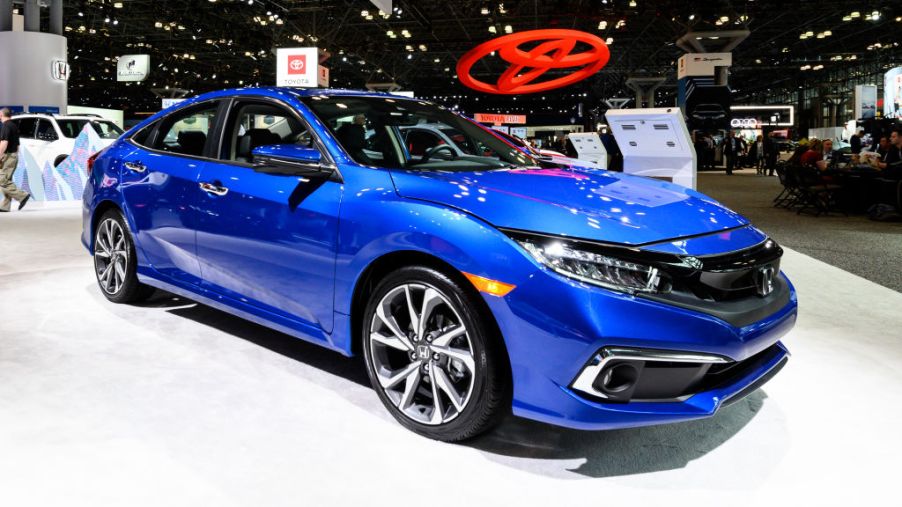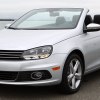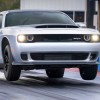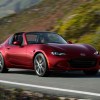
MotorTrend Just Picked the 2019 Honda Civic Over the 2019 Mazda 3 for These Reasons
When Mazda released its third-generation iteration of the Mazda3 in 2013, MotorTrend was head-over-heels. It was the compact sedan they recommended to all users. In their own words, “in 2014, it won a Big Test comparison against the Honda Civic, Hyundai Elantra, Kia Forte, and Toyota Corolla.” After that, newer compact sedans came out that gave Mazda a run for its money — it came fourth in a later follow-up comparison. However, MotorTrend still considered the Mazda3 one of the best small sedans out there.
With the recent debut of the fourth-gen Mazda3, MotorTrend decided to pit it against “their current favorite and Big Test winner: the 2019 Honda Civic.
Despite all odds, the Civic still managed to pull ahead and beat out the 2019 Mazda3 in a variety of categories. Below, we’ve detailed a brief run-down of which features were compared, and why the Civic remains MotorTrend’s reigning king of compact sedans.
Suspension
The third-generation Mazda3’s driving abilities were one of the reasons that MotorTrend named it a favorite. However, this newer version had replaced the independent rear suspension for a torsion beam system, which changes the way that it performs on the road. One of MotorTrend’s tester drivers said, “I felt more road imperfections in the Mazda than I did in the Honda.”
When driving over broken, uneven pavement, the Mazda3’s rear “felt like it lost traction whenever we drove over a bump on a corner.” Driving over smooth pavement was great, but the moment you drive over any imperfection on the road, you’re going to feel it.
Power & braking
Mazda updated its 2.5-liter four-cylinder engine to produce 186 hp and 186 lb-ft of torque, while a six-speed automatic transmission sends power to both front wheels. But testers weren’t loving this set-up.
The engine had adequate power when driving on flat surfaces, but merging on the freeway or going uphill was a struggle. Cabin noise also really increased in volume when stepping on the gas in these situations, minimizing the driver’s ability to hear well inside the vehicle.
One other small issue with the Mazda noticed by MotorTrend is that the brake pedal is difficult to predict. MotorTrend said it sometimes required you to slam on the brakes in order to come to a complete stop. This was most noticeable at the track, “where testing director Kim Reynolds had a hard time with the braking during the figure-eight test.”
Safety
Possibly the biggest factor that contributed to MotorTrend’s final decision was the 2019 Mazda3’s lack of availability and effectiveness of its safety features. The Civic comes with the Honda Sensing safety technologies suite: adaptive cruise control, lane keep assist, and automatic emergency braking, among other features.
MotorTrend pointed out the Mazda lacked basic standard safety features like automatic emergency braking. To get any kind of comparable variety of safety features, you have to upgrade for the Select package.
And even though the Mazda that was being rated did indeed have the Select package, testers weren’t very impressed with the way the included features (lane keep assist, lane departure warning, driver attention alert, adaptive cruise control, and brake support with pedestrian detection, among others) actually performed. They said, “Lane keep assist only intervened when the car had gone over the lane on the highway, and the adaptive cruise control left such a long following distance that we kept getting cut off.”
Price
The Honda Civic Touring that was tested cost $28,220 in total, while the Mazda3 Premium package that was tested had a price tag of $29,415 — $1,195 more than the Civic.
Considering that the Civic outperformed the Mazda3 in almost every high priority category, the fact that it cost less made it a clear-cut winner in this compact sedan showdown. Hopefully, Mazda will make the necessary changes for its next model, particularly the inclusion of important safety features, and maybe then we’ll see a different outcome.


